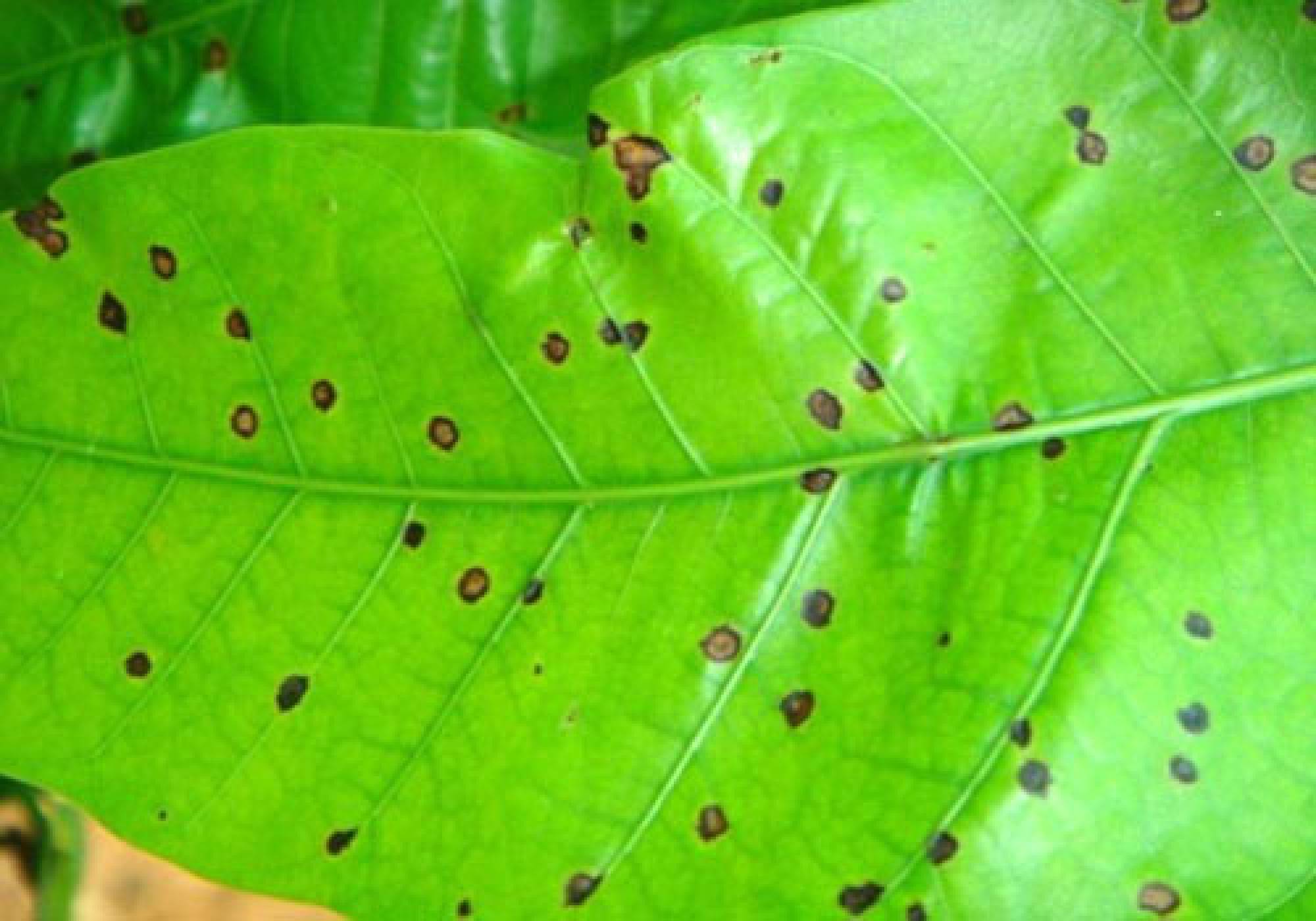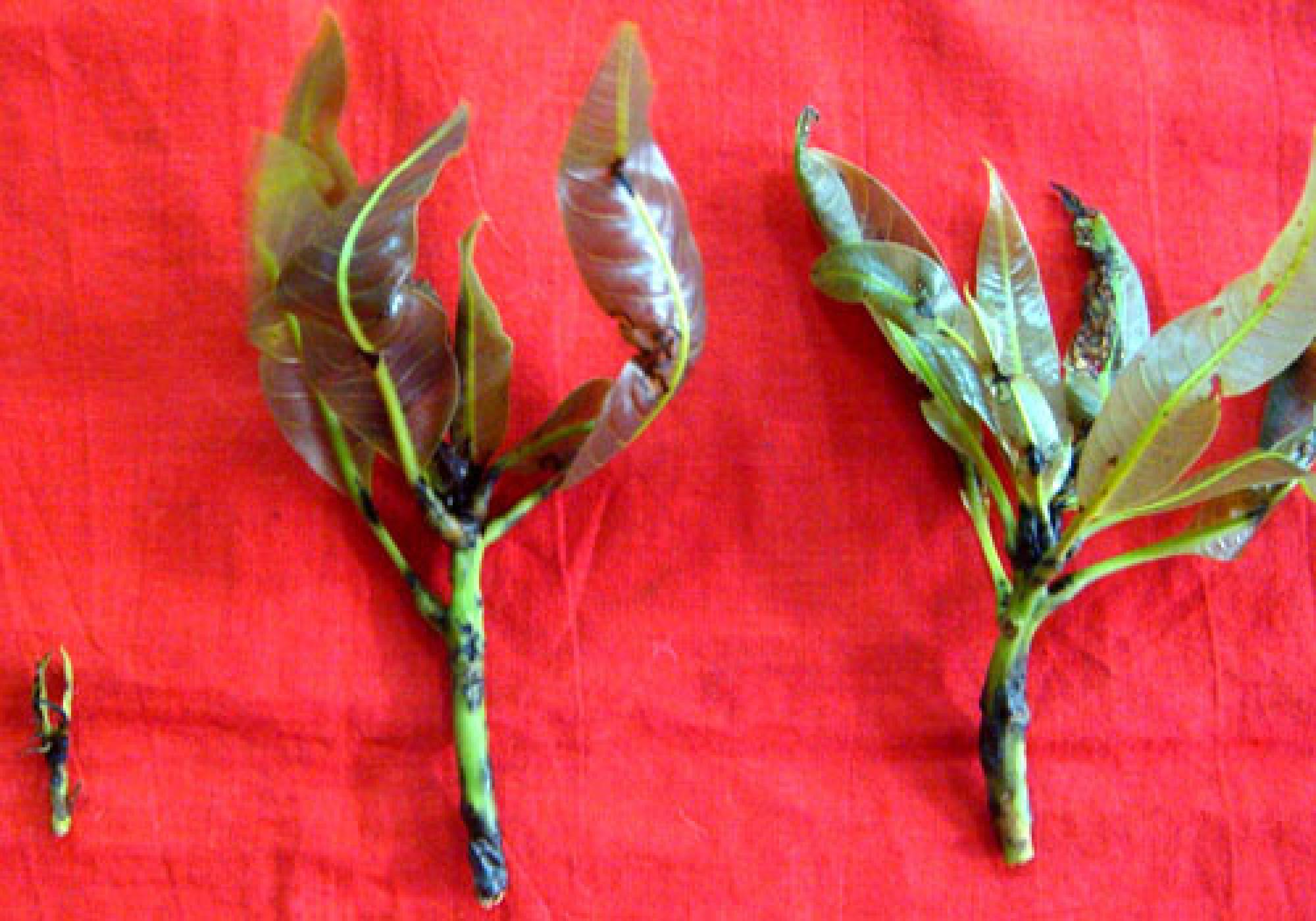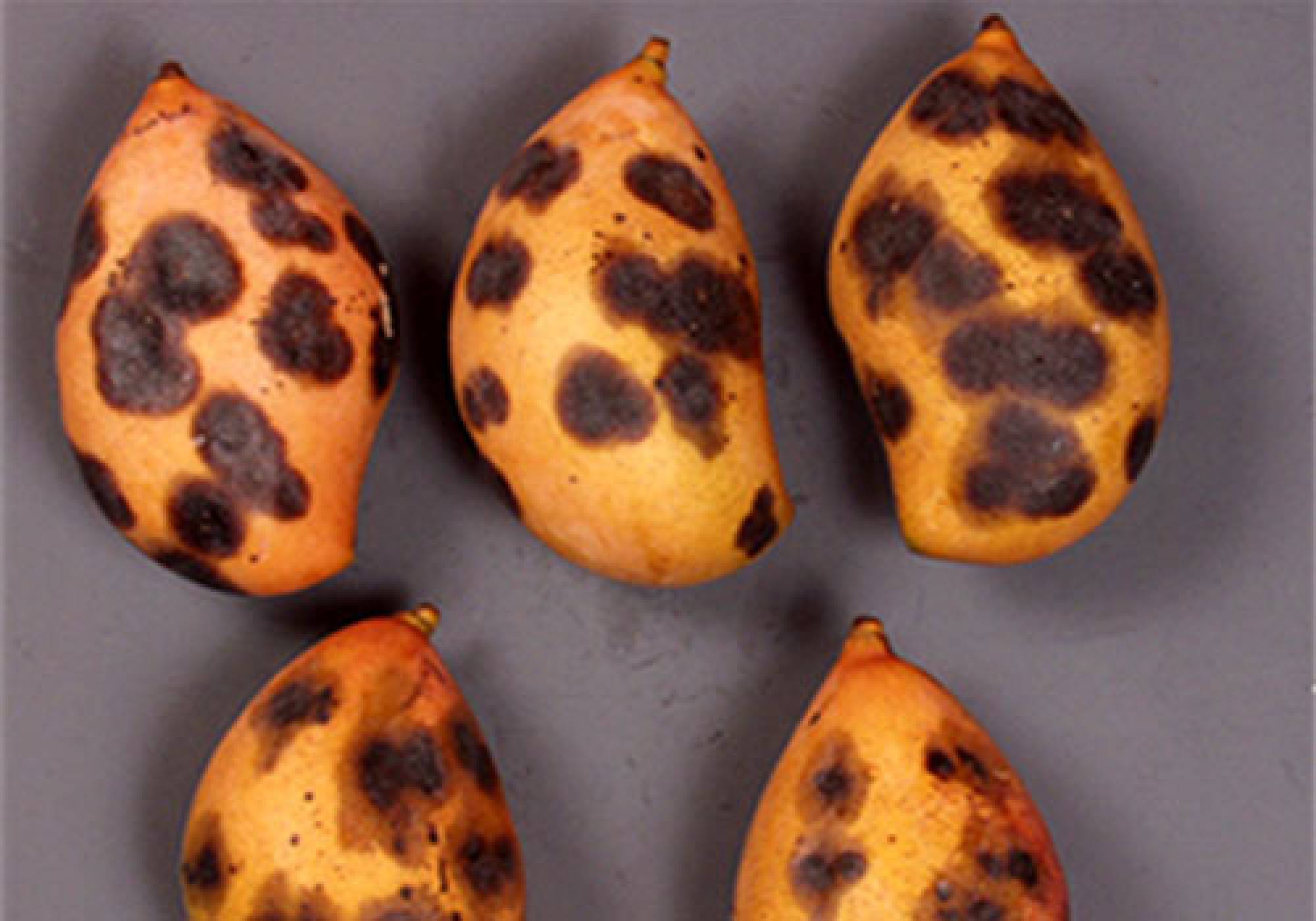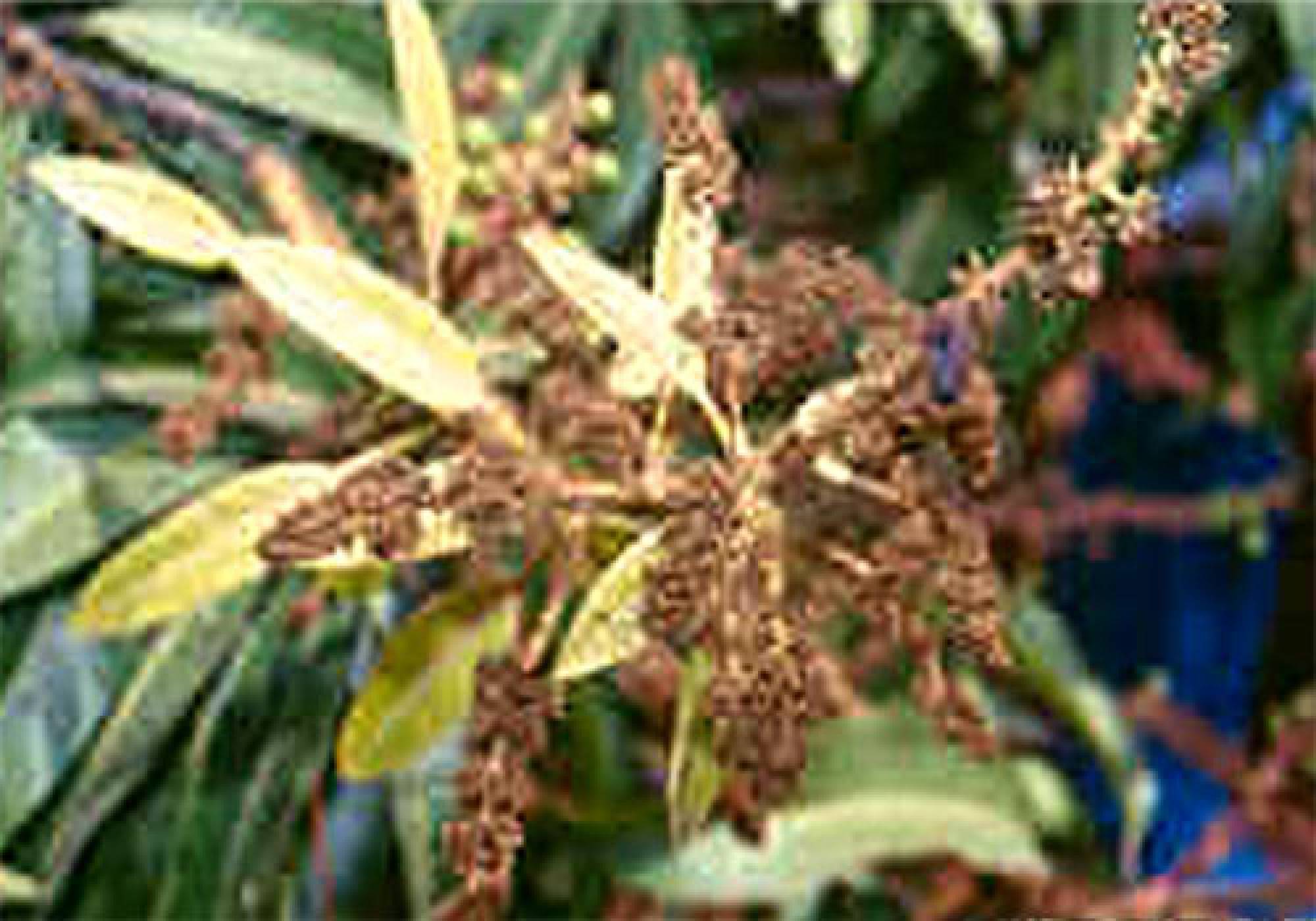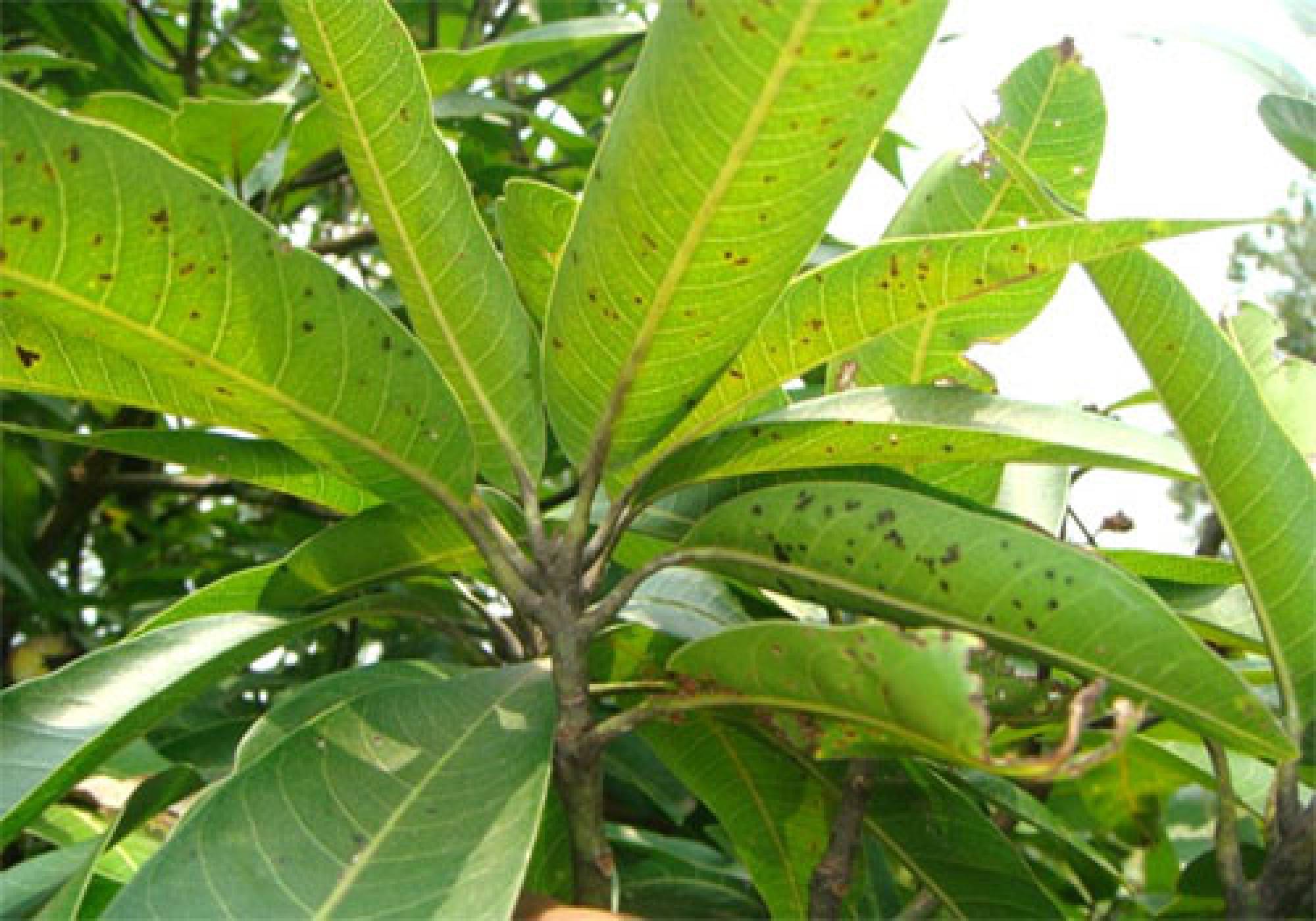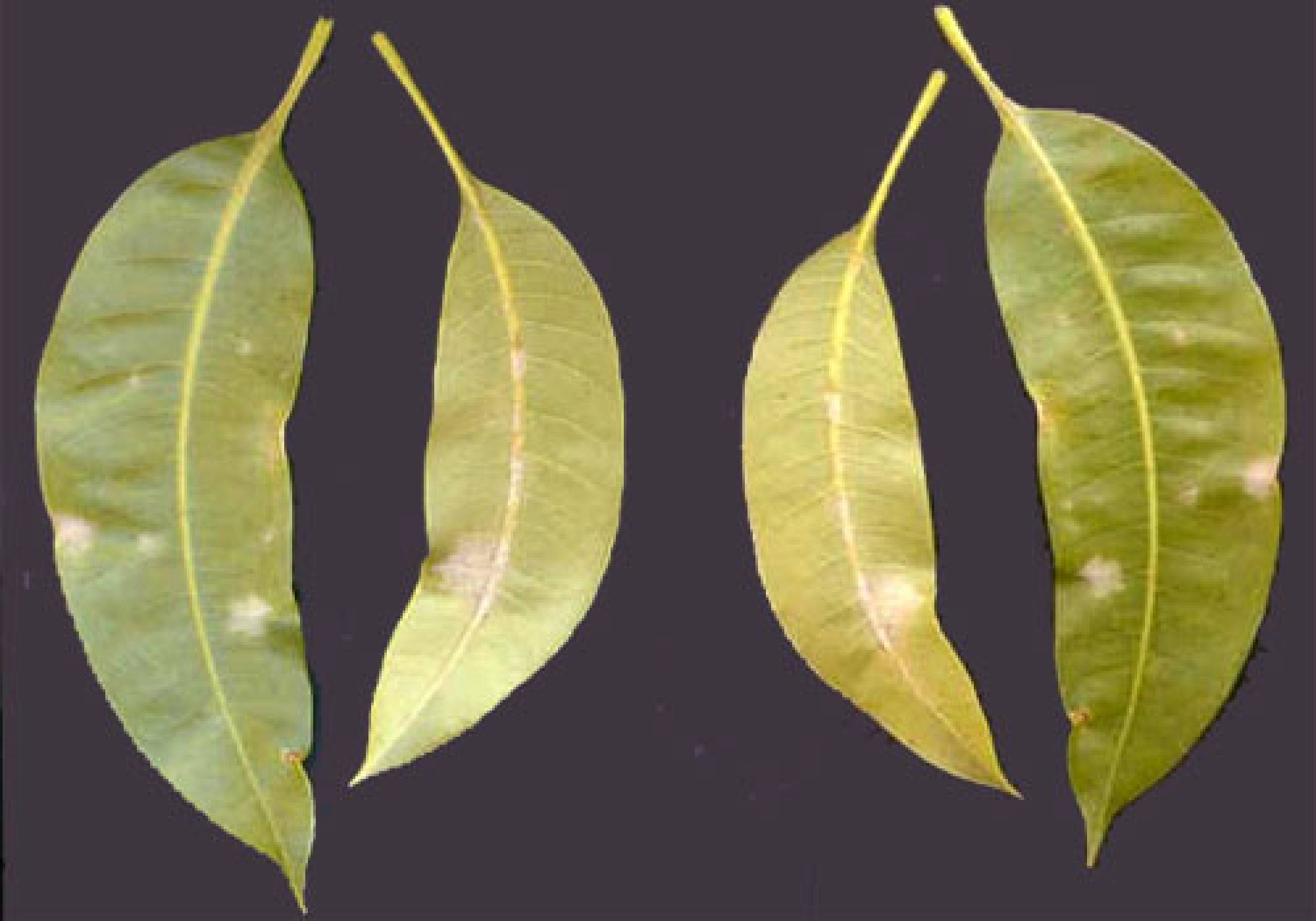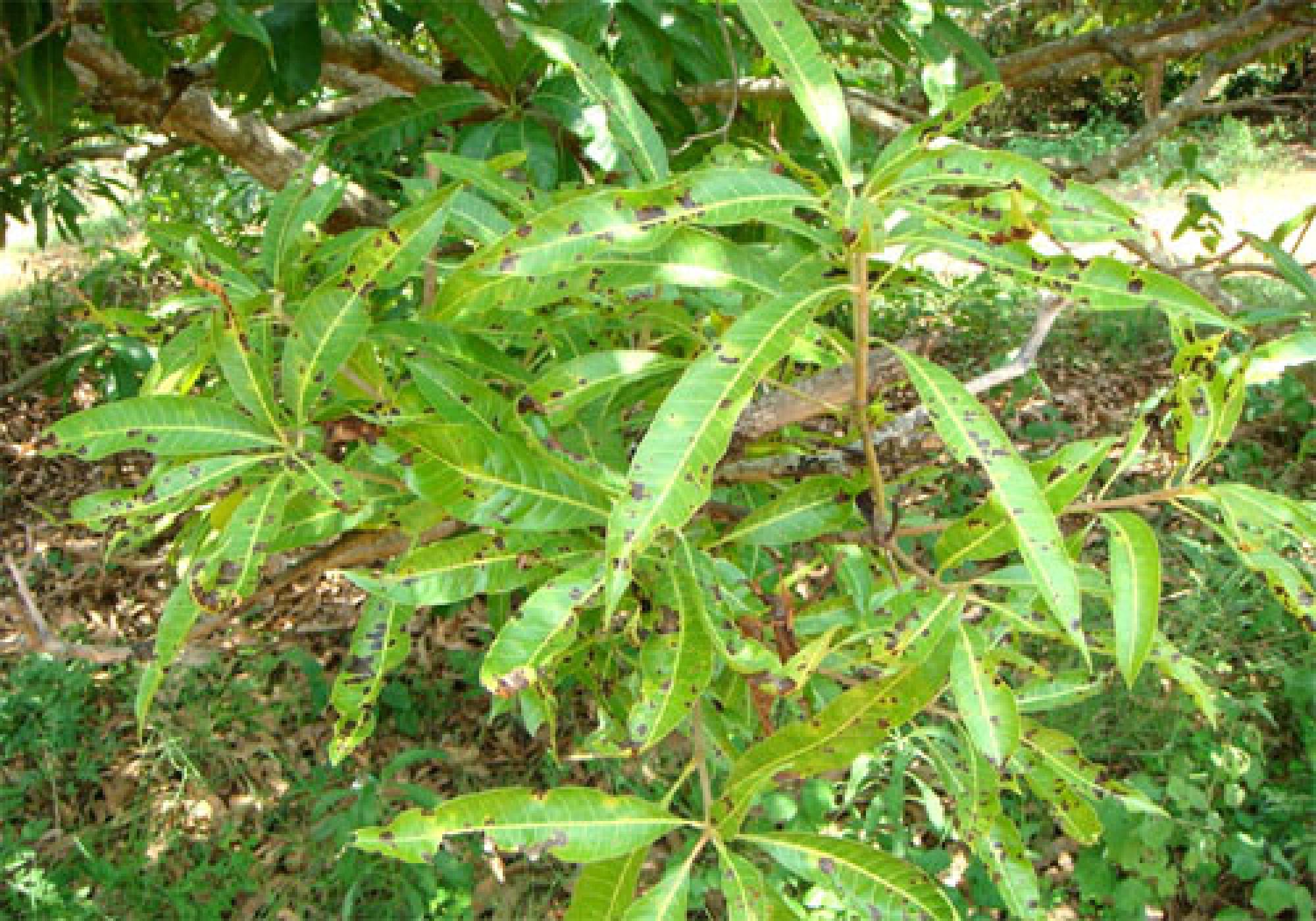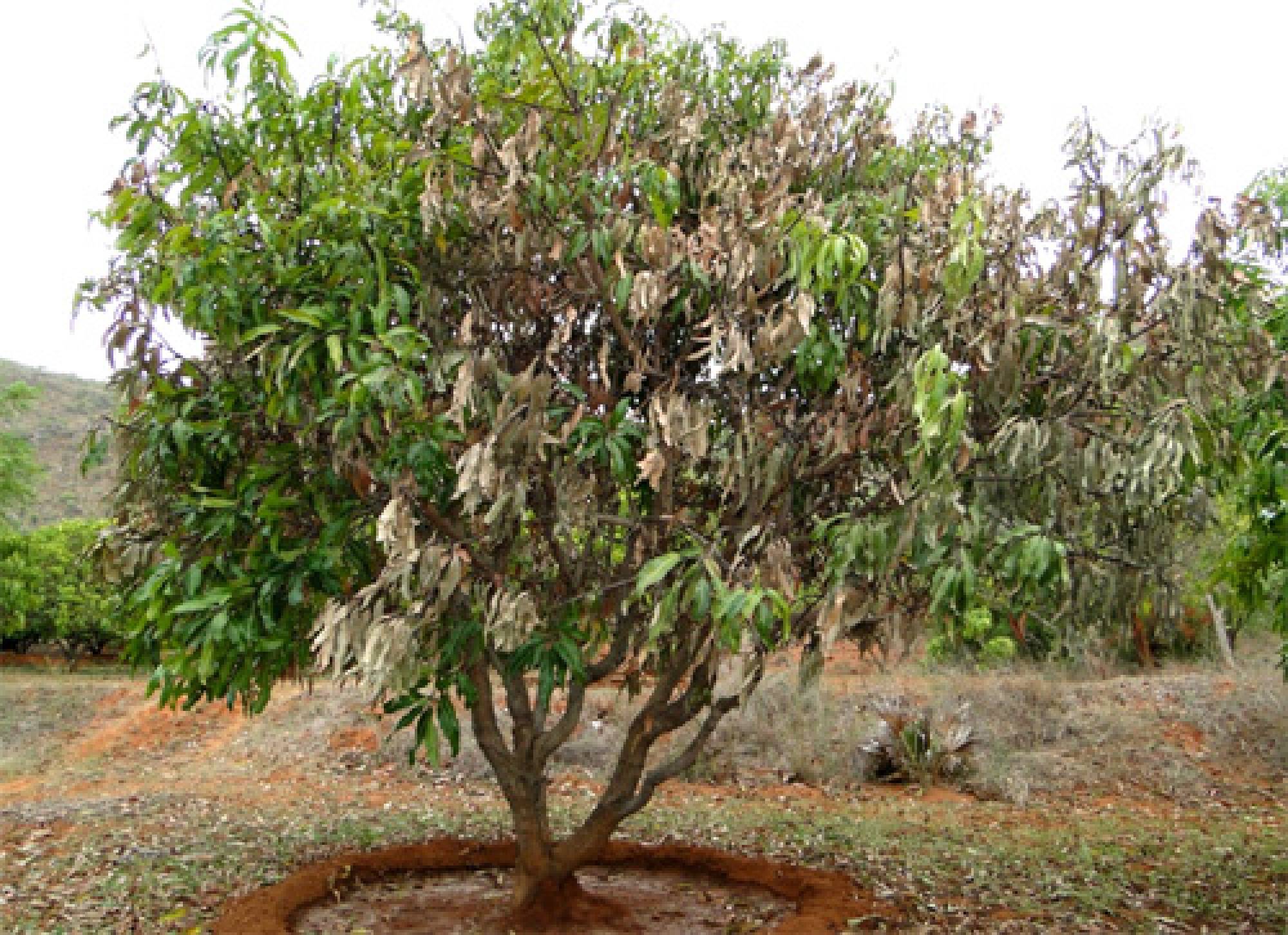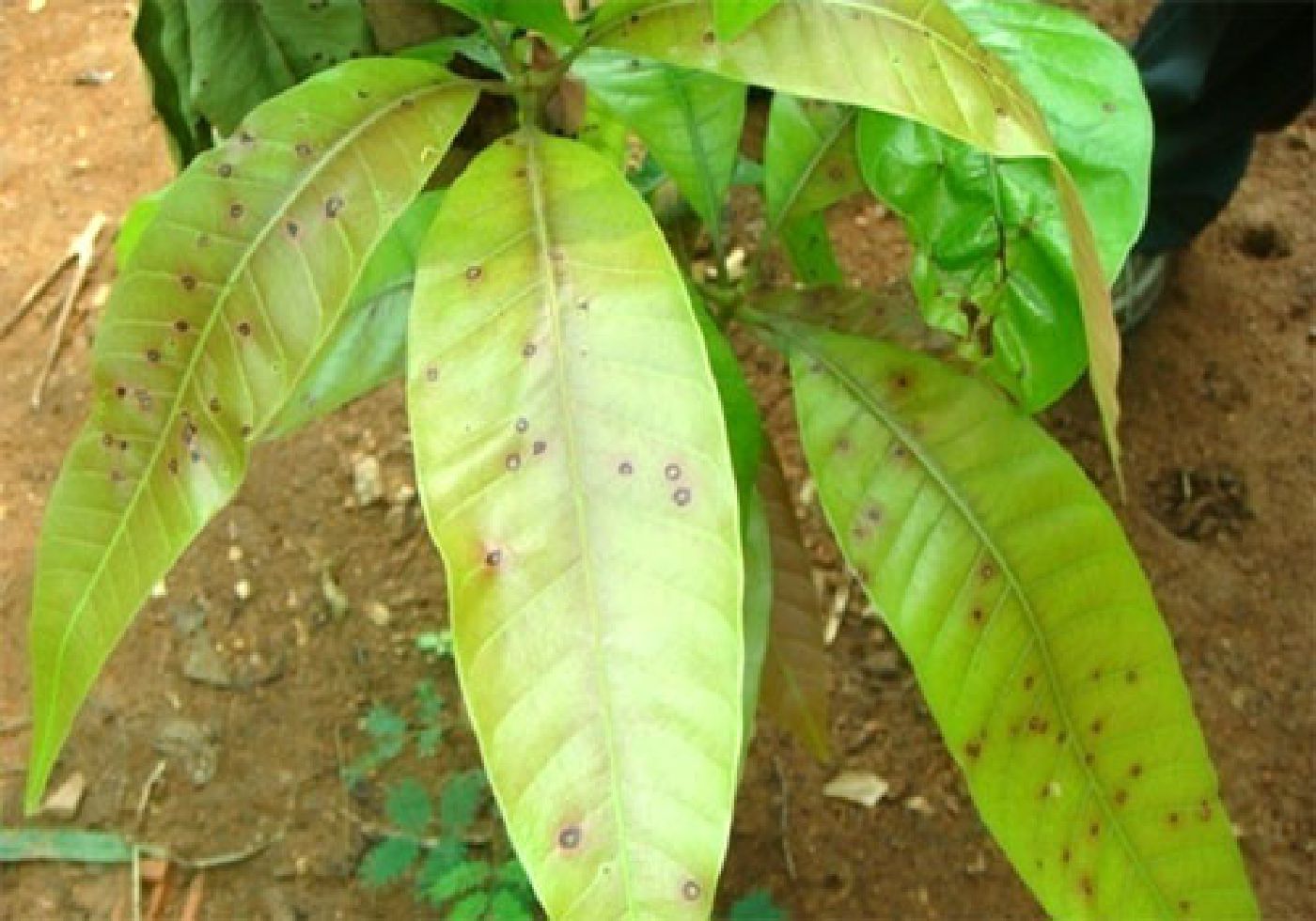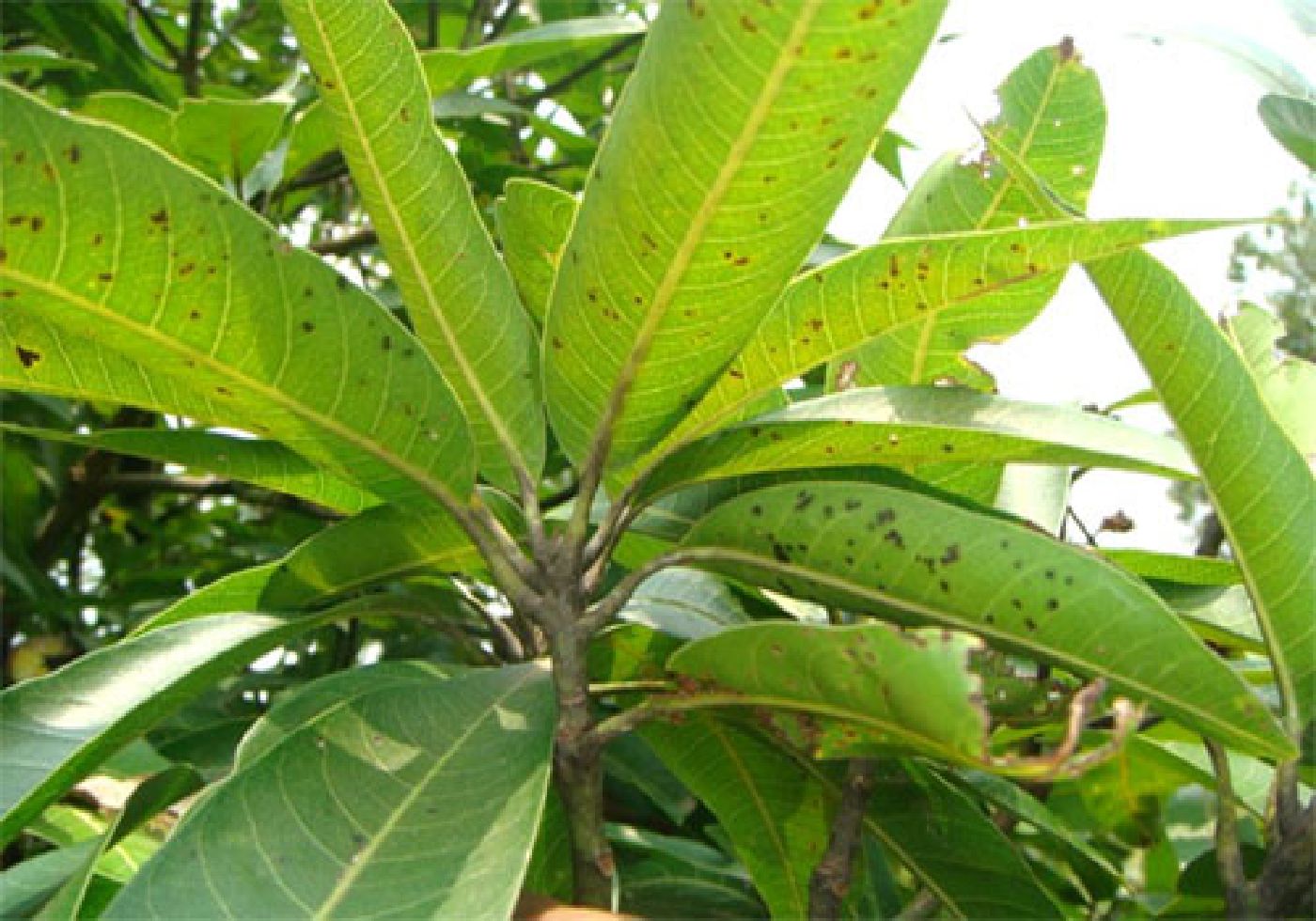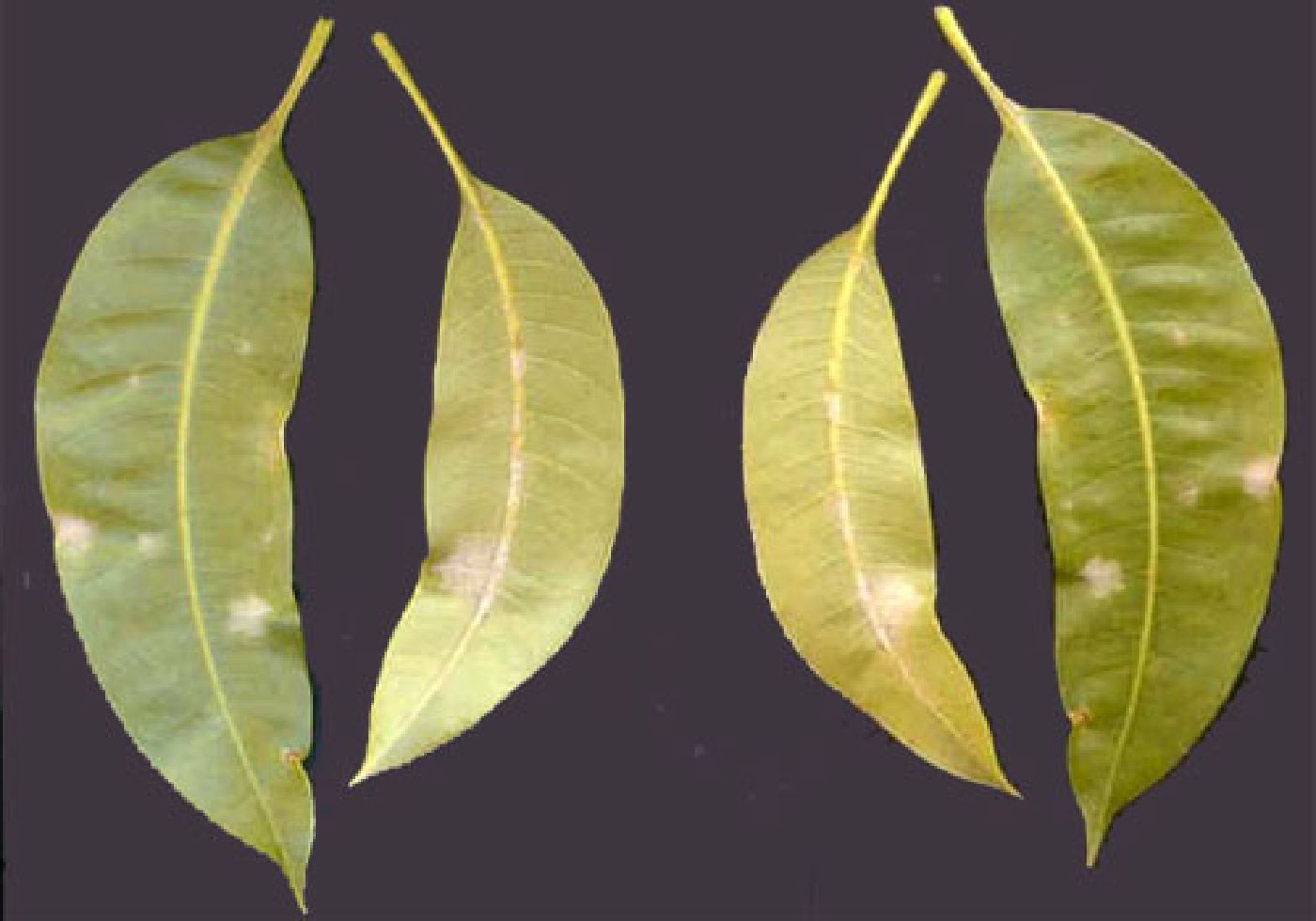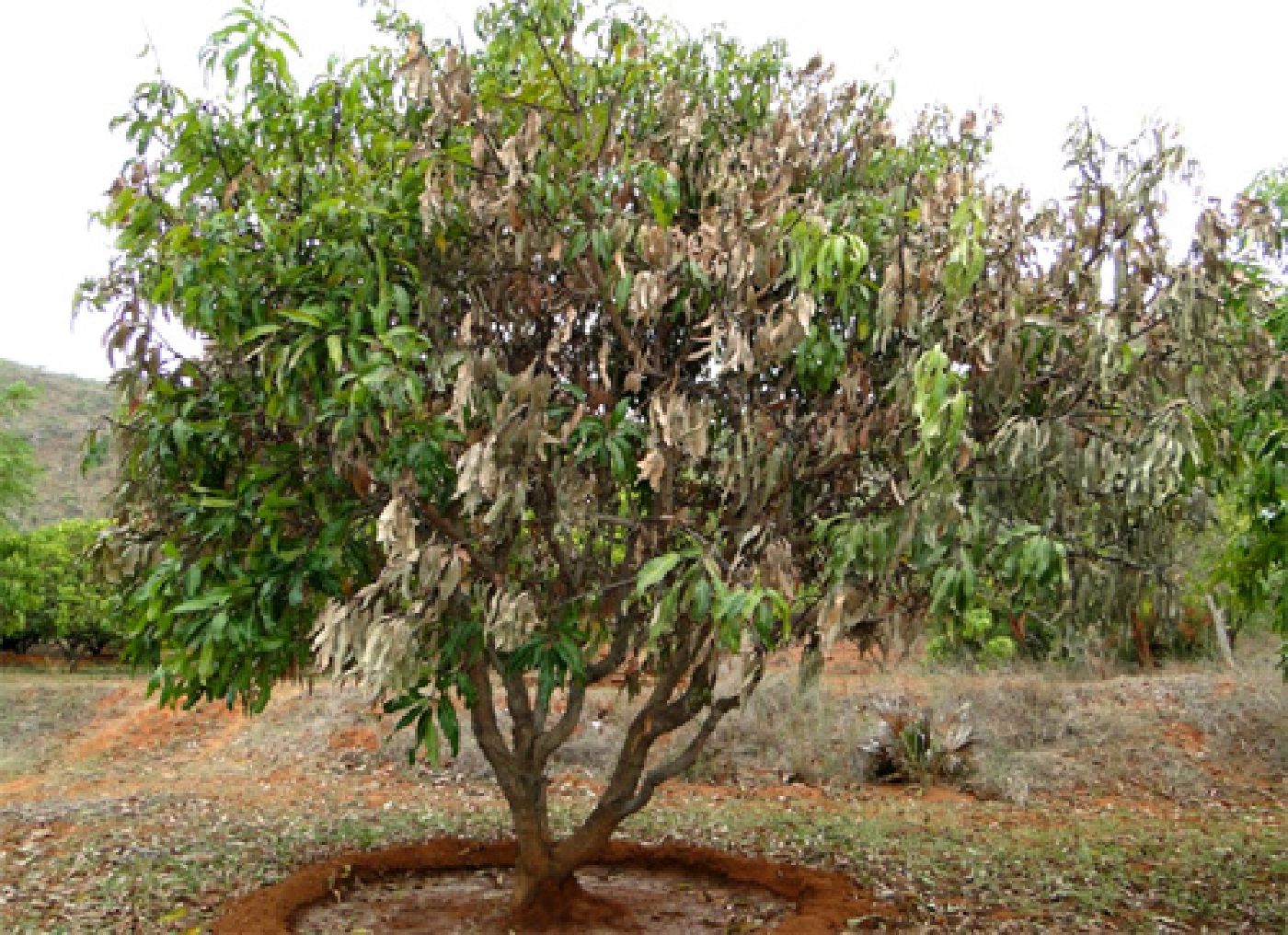Anthracnose
Anthracnose (Colletotrichum gloeosporioides): It is a serious disease on leaves and young shoots in rainy season and on fruits after harvest.
Symptoms: It is a serious disease on leaves and young shoots in rainy season and on fruits after harvest. The disease results in leaf spot, blossom blight, wither tip, twig blight and fruit rot symptoms. Young leaves when infected wither and dry up. At times when only the edges of the leaves are affected, their margins darken, dry up and may fall out, giving the leaf a ragged appearance. The disease causes the wither tip of young tender twigs. It also results in die-back which appears as blackening of growing tips. The affected branches ultimately dry and infection keeps on penetrating down. On fruits, infection starts from the blossoming period until the fruits are more than half grown.
The spots appear near the stem end as small brown areas that enlarge rapidly and become black. These may form streaks running down from the stem end. The affected areas are sunken and usually crack. The decay is confined to the skin of the fruit except in late stages when it penetrates the flesh in shallow areas. The unripe mature fruits carry the quiescent infection from the field that leads to rotting in the storage during ripening. Healthy fruits develop infection after coming in contact with diseased fruit.
Control:
The anthracnose could be effectively managed by four pre-harvest sprayings with Carbendazim 0.1% / Thiophanate methyl 0.1% / Prochloraz 0.1% or Chlorothalonil 0.2% at 14 days interval beginning when fruits attain pea nut size. Such pre- harvest treated fruits are to be further subjected to hot water treatment at 52°C for ten minutes immediately after harvest to provide very effective control of rot under storage.

